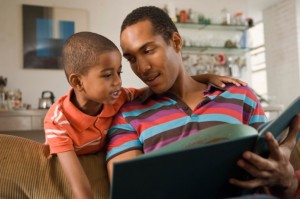 Don't count print books obsolete just yet -- especially when it comes to younger kids. A study released today by the Joan Ganz Cooney Center shows that even among parents who like reading e-books with their kids, the majority still prefer to read print books over e-books with their children.
Don't count print books obsolete just yet -- especially when it comes to younger kids. A study released today by the Joan Ganz Cooney Center shows that even among parents who like reading e-books with their kids, the majority still prefer to read print books over e-books with their children.
The survey, which included 1,200 parents of children age 2 to 6, showed that, of those who owned iPads (462 in total), an overwhelming majority -- 89.9 percent -- said they read mostly print books and some e-books, compared to 7.5 percent who say they read print books and e-books equally with their children, and only 2.7 percent who read mostly or exclusively e-books.
But the report also draws an interesting conclusion about how print books or e-books (in this case, iPads with multimedia features) are alternately preferred in certain situations. During times when parents want to read with their kids (co-read, as the report calls it), print books are preferred, even when e-books are available. But parents prefer e-books when they're traveling or commuting.
Mixed reactions were reported in other aspects too. Although parents recognize that e-books can play a role in developing their kids' literacy skills, especially when kids are reading alone, many iPad owners -- a full one-third surveyed -- said that sometimes "it's just too difficult to read with a child on digital devices, and nearly as many are worried the child would start to want to use the iPad all the time." Overall, in fact, 60 percent of parents said they prefer their child to read traditional print books.
This report follows another, much smaller survey of 32 parents, which examined the difference between recall and comprehension when kids read e-books versus print books.

